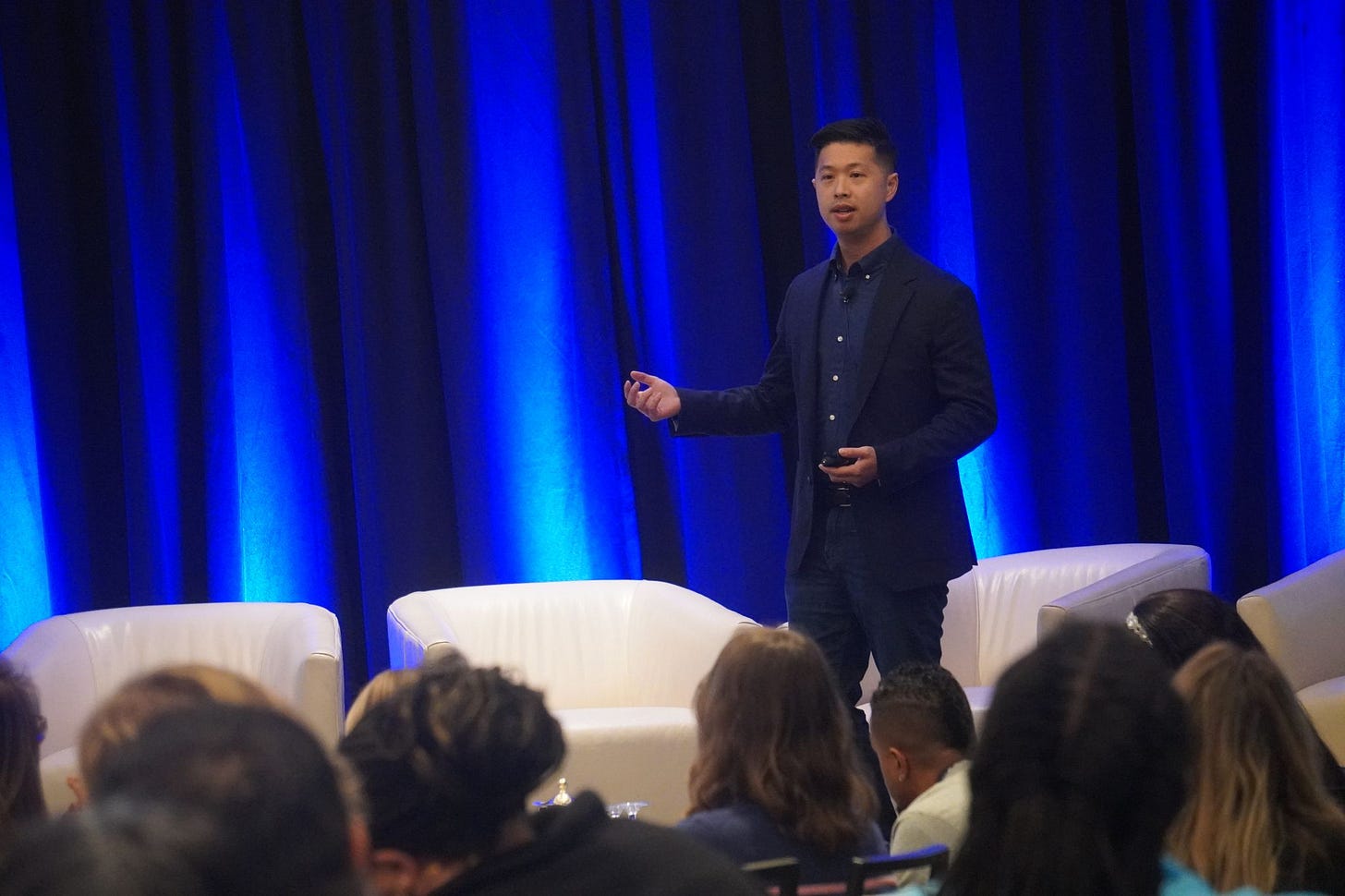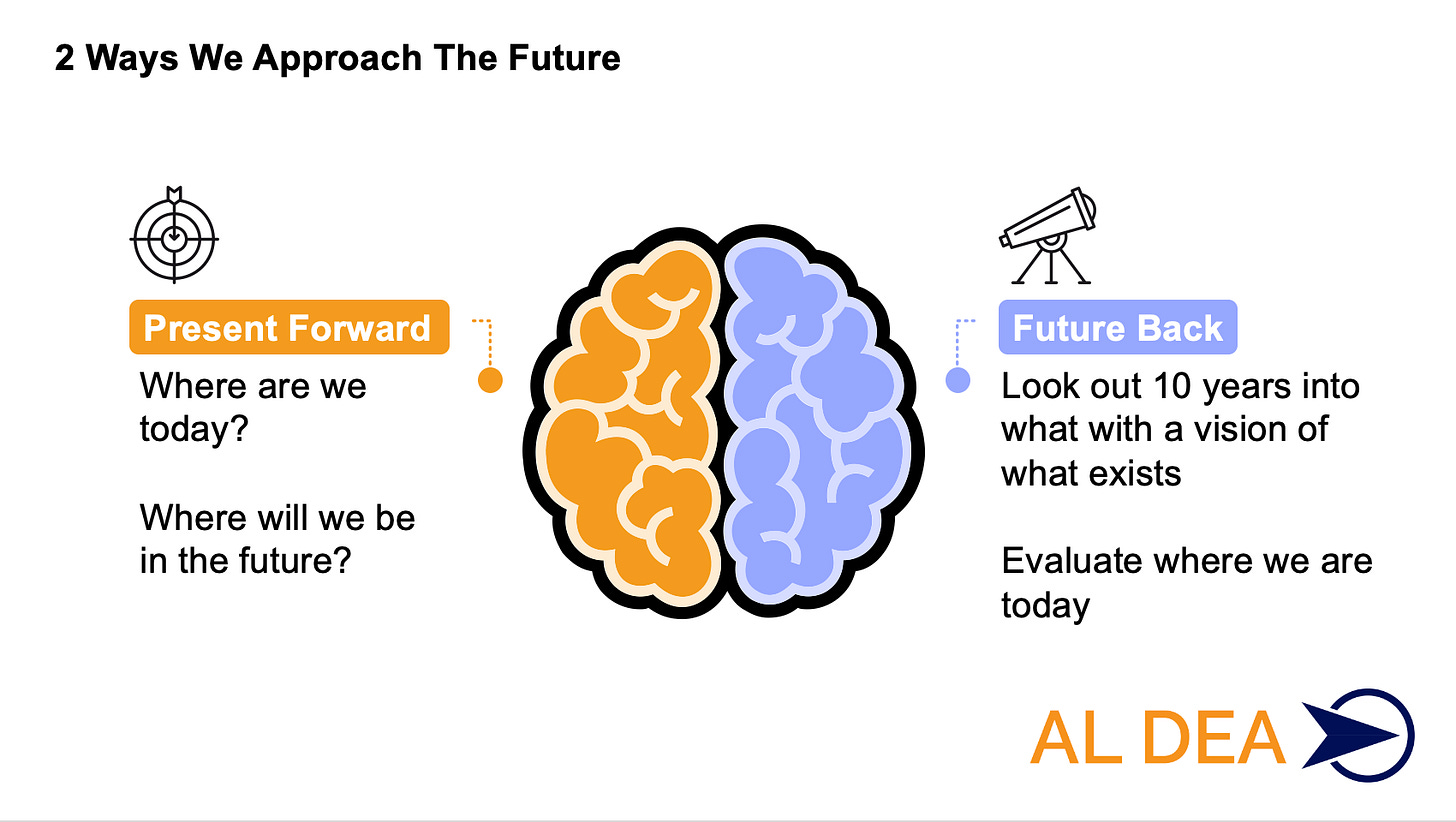Navigating Uncertainty: How to Adapt and Responding in a Changing World of Work
5 Ways to Think and Work Differently
Last week, I had the opportunity to deliver the closing keynote at the Corporate Learning Conference in Los Angeles, where I spoke on Transforming Leadership Development in the Age of AI. It was a fantastic opportunity to share insights from my work with clients, podcast conversations, and discussions with business and talent leaders about developing leaders who can manage teams, drive performance, and navigate today’s rapidly evolving and complex work environment.
The fast-paced changes in the workplace, economic uncertainty, combined with AI advancements, present both opportunities and challenges. The urgency to act is clear, but before reacting too quickly, it’s vital to slow down and reflect. I’m a big proponent of go slow to go fast.
In this moment of slowing down to reflect, isn’t just about responding to change, rather, it’s an opportunity to rethink how in my field of leadership development, we approach the way we develop leaders.
In times of uncertainty, it’s natural to turn to what we’ve done in the past to help navigate the present. This is human nature, and it often feels safe to rely on tried-and-tested methods. However, while this instinct can be helpful, it’s also important to step back and recognize the complexity of the moment and what is present to us. We need to challenge ourselves to think and work differently to address the enduring challenges in front of us.
In my keynote, I shared a series of actions leadership development professionals can adopt to change they way they think and work in the age of AI.
While these ideas primarily target leadership development professionals, I believe they are relevant across various roles and industries and wanted to share them with you in case they are helpful:
1. Think Like a Futurist
One of the most valuable shifts we can make is to think like a futurist. Futurists envision what’s possible in the future before considering the present. They think “future back,” which means imagining a world where we’ve achieved our goals, and then figuring out how to make that future happen. This approach allows us to break free from today’s constraints and think expansively about how to evolve our systems and goals.
By thinking this way, we create space for creativity and critical thinking. This mindset encourages us to imagine innovative solutions that can help us reach our objectives in new, more effective ways. It’s a powerful tool for designing a future we want to work toward, rather than simply accepting the one handed to us. When we think like futurists, we open ourselves up to new possibilities that can shape our work and organizations in meaningful ways.
2. Operate at the Top of Your License
In the medical field, the phrase “operate at the top of your license” ensures that every team member is focused on tasks that align with their highest skill set and expertise. This concept can be applied to leadership development and other fields as well. With so many demands on our time, it’s easy to get caught up in low-value tasks that don’t align with our strengths. By adopting this approach, we ensure that we focus on the work that truly matters and allows us to contribute the most value.
This concept also helps identify tasks that are no longer serving the outcomes we want to achieve. It provides a framework to assess and reassess our activities, eliminating what’s no longer necessary and freeing up time for high-value tasks. In the context of AI, this approach also prompts us to consider how technology can help us automate or enhance certain tasks, enabling us to focus on more strategic or creative aspects of our work.
3. Stay True to the Roots
While change is necessary and exciting, we must also recognize the enduring value of certain principles. In leadership development, time-tested research such as the two sigma problem deliberate practice, social learning theory, and spaced repetition have proven effective for decades. These foundational principles remain highly relevant, even as the tools and technologies we use to implement them evolve.
AI and other emerging technologies can enhance these core principles but should not replace them. Instead, we should explore ways to blend these timeless ideas with new technology.By marrying the old with the new, we can create more dynamic and effective solutions for today’s leadership challenges.
4. Partner Up with Your Peers
In times of change and uncertainty, it’s easy to feel isolated and overwhelmed. However, one of the most powerful strategies for navigating these challenges is to collaborate with peers who are facing similar difficulties but perhaps have different approaches and skills. This collaboration allows us to share knowledge, gain new perspectives, and solve problems together. In leadership development programs I’ve run, I’ve seen firsthand how peer support can transform the way people approach their challenges. When one person admits to struggling, others often realize they are facing similar issues.
During uncertain times, many of us instinctively turn inward, focusing on our own concerns. But instead of isolating ourselves, we must resist that urge and reach out to others. Whether it’s colleagues, teammates, or professional peers, collaborating with others offers fresh perspectives and can provide the clarity we need to make better decisions. By working together, we can create a collective solution to the problems we face and support each other in navigating uncertainty.
5. Experiment Like a Scientist
In a rapidly changing world, it’s tempting to think we need to have all the answers right away. But the truth is, we don’t have to solve everything at once. I wasn’t a very good student in science in high school but one concept that has stuck with me throughout my career is the scientific method and hypothesis testing. We can embrace the scientific method—hypothesis testing, experimentation, and iteration, to guide our efforts. Rather than feeling the pressure to solve all problems, we can focus on testing small hypotheses and learning from our results. Each step is an opportunity to gain new insights that can inform the next phase of our work.
This approach allows us to remain flexible and adaptable. Instead of feeling like we must have everything figured out from the start, we can experiment and adjust as we go. In the context of AI, this mindset can help us test new tools, processes, and strategies to see what works best for our needs. It encourages us to remain open to change and ready to learn from every experience.
A Personal Reflection
Looking back at my own career, I can see how embracing change and uncertainty has shaped my professional journey. When I entered the workforce in the early 2010s, I witnessed the rise of digital technologies transforming business operations. I saw this as an opportunity to learn and grow, so I immersed myself in understanding how these technologies could enhance productivity and improve business outcomes.
Through a combination of luck and hard work, I found myself working with our Chief Technology Officer, helping to shape the company’s strategy on emerging technologies. This experience significantly impacted my career, moving me from traditional client work to the cutting edge of digital innovation. One of the highlights was contributing to the launch of the company’s first-ever digital business line, which became a multi-billion-dollar offering in a few years, as well as forging partnerships with the Wall Street Journal and MIT Media Lab.
While I didn’t know exactly how the digital revolution would unfold, I took an active role in embracing the changes and opportunities that came my way. By applying the principles of experimentation, collaboration, and futurist thinking, I was able to navigate uncertainty and build a successful career path. The key takeaway is that, while we cannot predict the future, we can take ownership of our journey and shape the opportunities ahead of us.
I’d be lying if I said what I am offering up was easy. But while we face many challenges, particularly in times of change, there are always opportunities for growth. By thinking creatively, staying grounded in proven principles, collaborating with peers, and experimenting with new ideas, we can overcome uncertainty for ourselves as well as for others. In these times, we can create agency for ourselves, and embrace the possibilities and take action to turn them into reality.
PS - If this message resonated with you and your team, I’m booking speaking engagements for the summer and fall and would love to share it with you. Contact me for more details
Call To Action
Thanks for reading! If you enjoyed this newsletter and found it valuable and would like to work together, here are three ways. If you’re looking for some help for your learning and development, leadership development, I’d love to work with you: Here is how I might be able to assist:
Leadership & Learning Programs: Formal training and leadership development in your company, such as new manager or new leader training, or skill-based programs. (See Here for more details)
Keynote Speaking - Do you have a conference, offsite, or event and in need of a speaker? I’d love to hear more and see how I can assist
1:1 Executive Coaching - Are you looking for an executive coach for 1:1 leadership support? Let’s chat about how we can work together
Feel free to contact me directly for more details!



